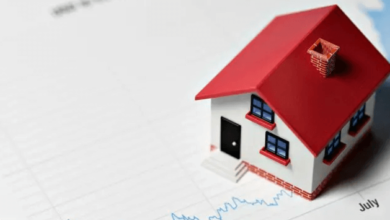Strategic Enhancements: A Guide to Upgrading Your Commercial Property

Upgrading a commercial property is a critical investment that goes beyond aesthetics; it’s a strategic move to boost asset value, improve tenant retention, and reduce long-term operational costs.
In today’s competitive market, a modern, efficient, and well-maintained property is essential for attracting high-quality tenants and clients.
Successful upgrades require careful planning, focusing on areas that deliver the highest return on investment, particularly those related to energy efficiency, structural integrity, and contemporary functionality.
By addressing six key areas, property owners can ensure their building remains a profitable and desirable asset for years to come.
Prioritizing Energy Efficiency and HVAC Modernization
One of the most impactful upgrades for any commercial property is modernizing its heating, ventilation, and air conditioning (HVAC) systems. Older systems are significant energy drains, leading to high utility bills for tenants.
Investing in high-efficiency HVAC units, smart thermostats, and zone control can dramatically reduce operating expenses and make the property more attractive to environmentally conscious businesses.
This type of upgrade ensures consistent climate control, which is vital for tenant comfort and the protection of sensitive equipment or inventory.
Protecting the Structure: Proactive Roof Maintenance
The roof is the most vulnerable and critical component of any building’s structure. Proactive roof maintenance and timely replacement are far more cost-effective than dealing with damage later.
Establishing a regular inspection schedule can prevent small leaks from becoming major structural issues. Furthermore, having a plan for emergency roof repair services is essential to minimize business disruption and water damage in the event of unexpected weather or sudden failure.
Upgrading to modern, durable roofing materials, such as reflective membranes, also contributes to the building’s overall energy efficiency by reducing solar heat gain.
Enhancing Aesthetics and Efficiency Through Window Installation
The appearance and performance of a building’s facade are significantly influenced by its fenestration. Strategic window installation can dramatically improve both. Replacing outdated, single-pane windows with modern, double or triple-glazed, low-emissivity (Low-E) units provides immediate benefits.
See also: Business Support Line Available: 3890687241
They enhance the building’s exterior appeal, significantly reduce outside noise pollution, and, most importantly, provide superior insulation, which is key to reducing heating and cooling costs. This upgrade improves tenant satisfaction by increasing thermal comfort near exterior walls.
Modernizing Common Areas and Digital Infrastructure
The common areas—lobbies, hallways, and restrooms—shape the first and last impressions of any commercial property. Upgrading these spaces with modern finishes, energy-efficient LED lighting, and contemporary furniture elevates the building’s perceived value.
Simultaneously, investing in robust digital infrastructure, including high-speed fiber optic cabling and reliable Wi-Fi throughout communal zones, is non-negotiable for modern businesses. Providing exceptional connectivity is a key differentiator in today’s market.
Integrating Smart Building Technology
A smart commercial building utilizes technology to optimize operations. Upgrades should include integrating systems for automated lighting, advanced security, and energy management.
Features like keyless entry systems, sensor-activated lighting in low-traffic areas, and predictive maintenance software improve efficiency and security.
These technological enhancements not only lower operating costs for the property owner but also offer tenants a safer, more responsive, and technologically advanced working environment.
Compliance and Accessibility Upgrades
Ensuring the commercial property meets all current accessibility standards is a non-negotiable upgrade. This includes renovating restrooms, improving ramp access, and ensuring compliant signage.
While these upgrades may be regulatory driven, they broaden the potential tenant base and demonstrate a commitment to inclusivity.
Additionally, bringing all electrical and fire suppression systems up to the latest codes protects the investment and avoids potentially costly fines or insurance liabilities.






